Carpenter Bees are wood destroying insects that are most commonly found hovering around homes, sheds, and garages. We will show you how to treat for carpenter bees.
Why do I have carpenter bees?
Carpenter bees tend to damage unpainted and untreated wood. Often we will find them under railings and under flashing. These areas are often not painted because you can’t see them.
Carpenter bees will find the smallest of areas that are unpainted and untreated and make their 1/2″ holes.
Some carpenter bees will damage and drill unto painted and treated wood. Painting or staining your wood is a good general deterrent but will not prevent all carpenter bees from damage.
Find the carpenter bee holes
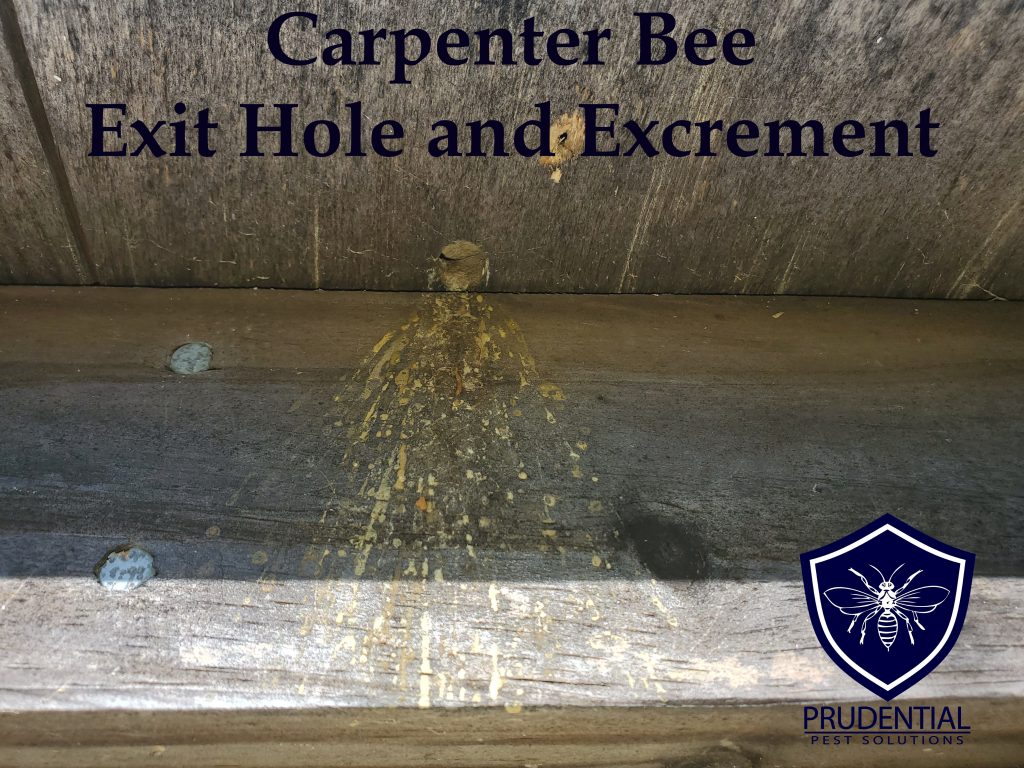
Sometimes the carpenter bee holes are visible and easily seen. Other times, we can see the carpenter bees hovering around but don’t see the holes.
Finding and treating the carpenter bee exit holes is the ONLY effective way of resolving your carpenter bee infestation.
If the carpenter bee exit holes are not visible, then we need to look for other evidence. When carpenter bees chew into the wood, they excrete wood onto the surface opposite the hole.
This yellow or brown excrement will tell you exactly where the carpenter bee hole is.
Another method to find the carpenter bee exit hole is to look for the pile of sawdust. Since they are chewing into the wood, the bees create a pile of sawdust directly UNDER where the hole is.
Treat EACH and EVERY hole with an insect dust
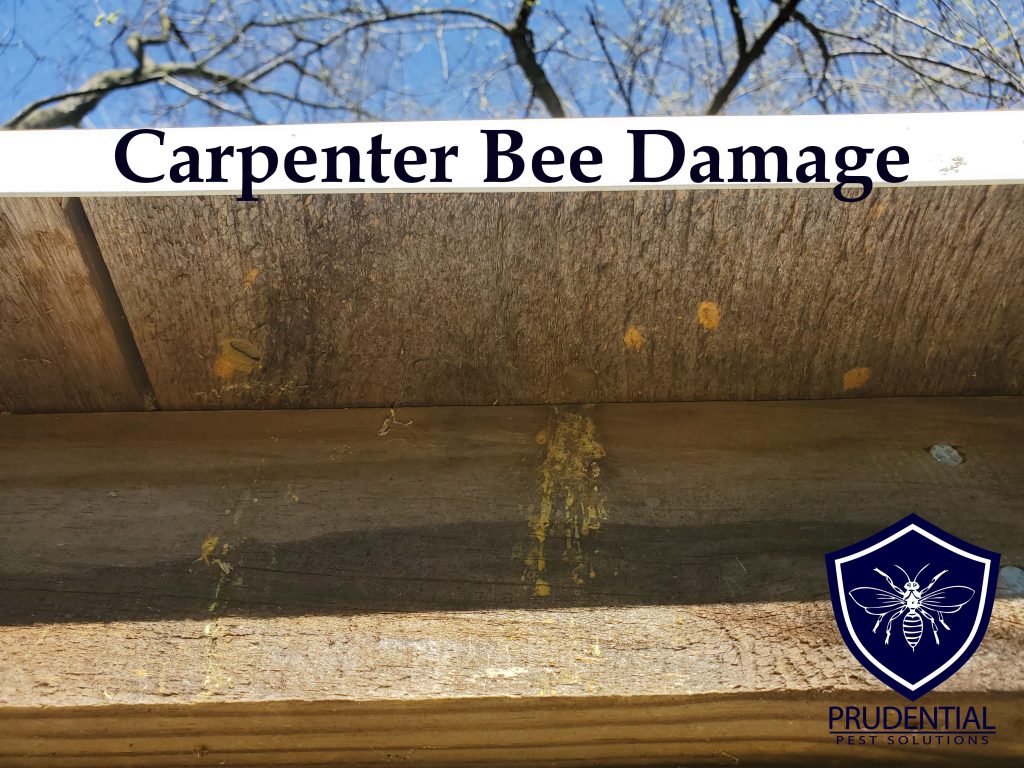
Spraying at the carpenter bees or spraying the carpenter bee holes is NOT an effective treatment strategy. The carpenter bees make very elaborate and deep channels within the wood and a spray will simply not reach deep into the wood.
We recommend using an insect dust labeled and listed to treat carpenter bees. In the video above we used a product called Tempo Dust. Delta Dust, Alpine Dust, and others are also very effective at treating for carpenter bees.
Using a duster, which is a tool used to apply dust, treat each and every carpenter bee hole. This may sound like a daunting task, but treating every carpenter bee hole does 3 things for us:
- Kills the carpenter bees that are in the carpenter bee holes and channels
- Will kill the carpenter bees when they return to their holes if they aren’t currently in there
- The dust will kill any new carpenter bees that hatch in the wood
Make sure to find and treat EVERY single carpenter bee exit hole that you can. Look for holes AND the evidence of holes such as saw dust and excrement.
The dust, unlike a spray or aerosol, will permeate throughout the chambers and galleries in the wood. Dust will also last SIGNIFICANTLY longer than sprays and aerosols.
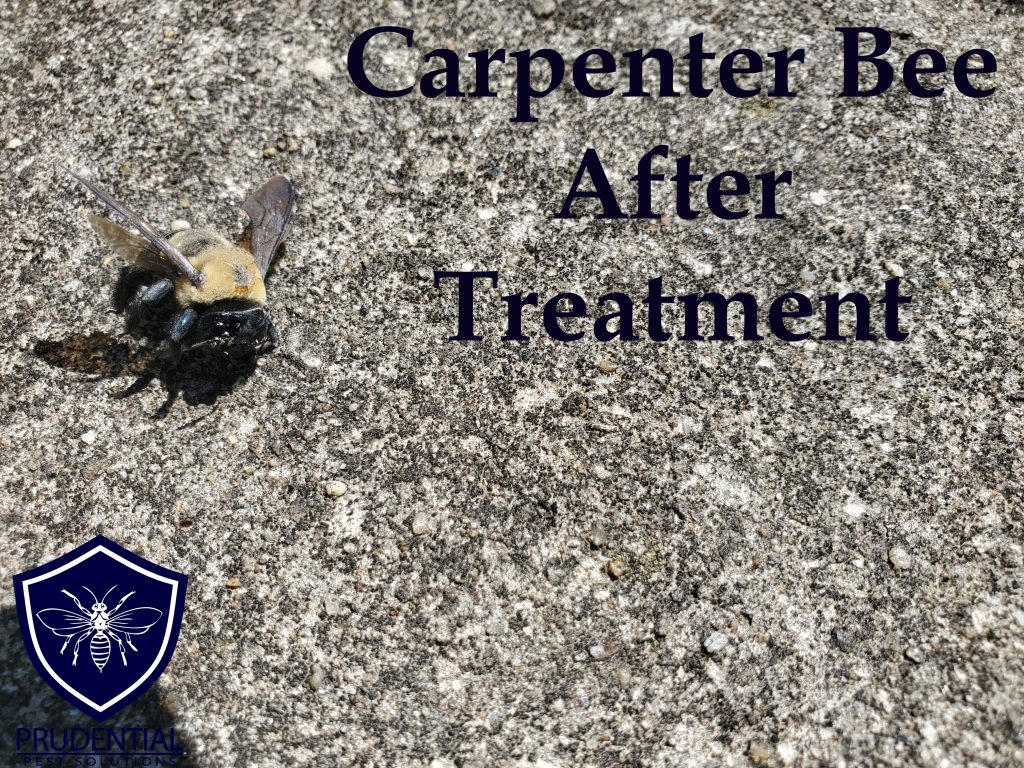
After you treat the carpenter bees holes with a dust you start to see the carpenter bees emerge from the holes. The bees will be covered in the white dust and will fall from their holes.
Within a few hours you will notice significantly less carpenter bees flying around.
When should you call a professional to treat for carpenter bees?
Treating for carpenter bees around a shed or deck can be pretty straightforward. You should call a professional if the carpenter bees are:
- Too high off the ground. Professional exterminators have tools and ladders to reach carpenter bee holes very high off the ground.
- You can’t find the holes. Finding the holes is the ONLY way to effectively resolve your carpenter bee issue.
- You’re not comfortable being around flying insects. As you are treating the holes, the carpenter bees will be flying around and hovering in and near your personal space.
Need a carpenter bee expert?
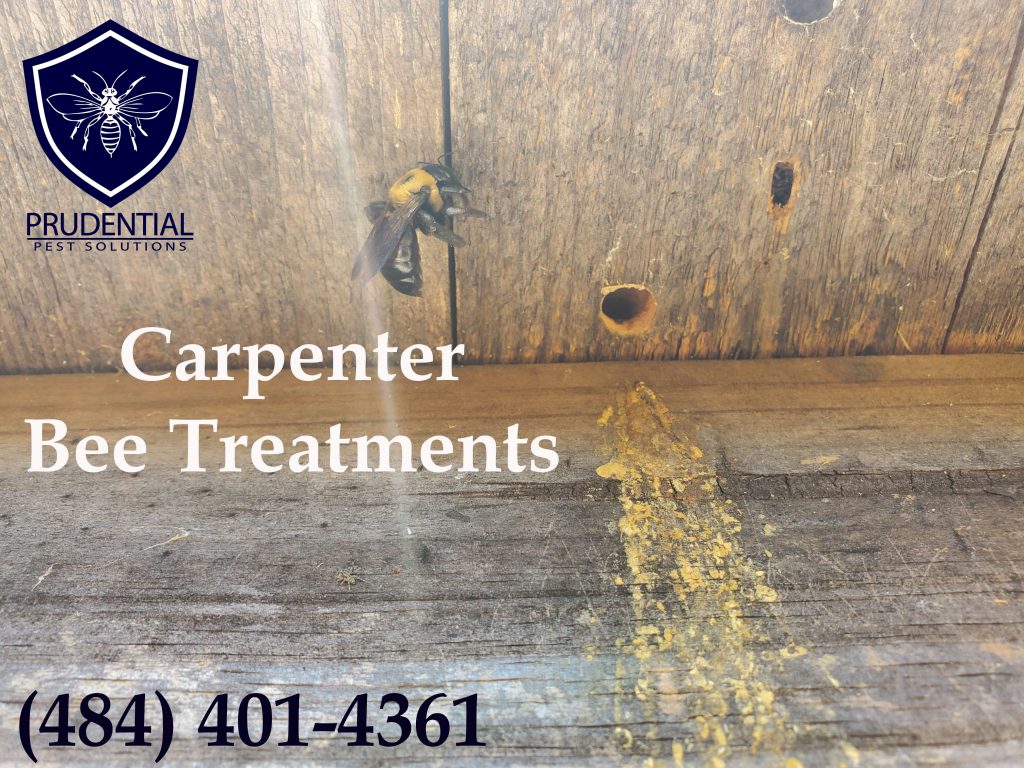
We are experts in treating and resolving carpenter bee infestations. We service South Eastern and South Central Pennsylvania. Prudential Pest Solutions is a fully licensed and insured, family and veteran owned and operated pest control company.
Talk with carpenter bee expert!
Give us a call or text us at (484) 401-4361 to speak with a carpenter bee treatment expert.
Where do we service and treat for carpenter bees?
We service and treat for carpenter bees in South Eastern and South Central Pennsylvania including:
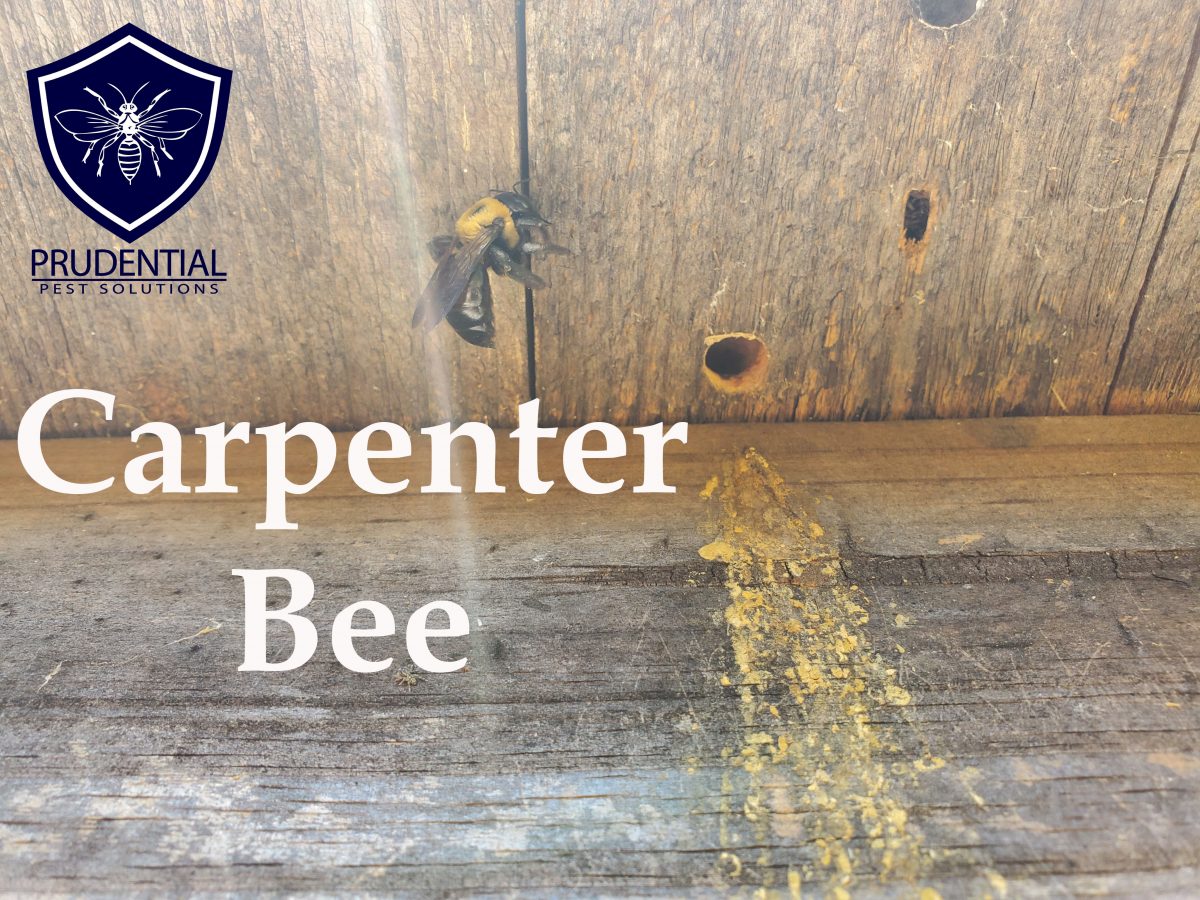
Comments are closed